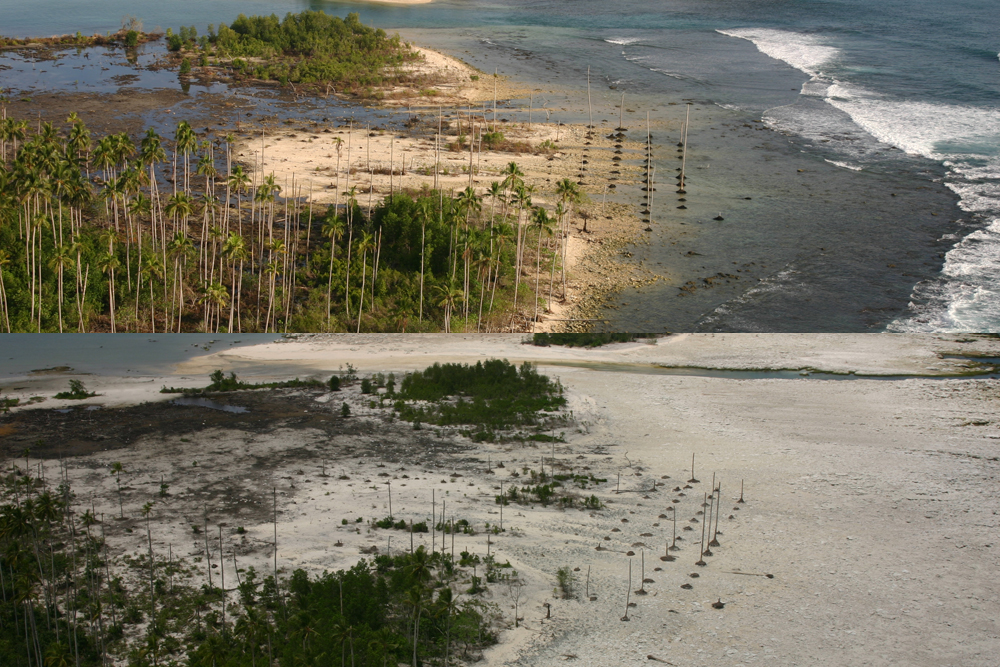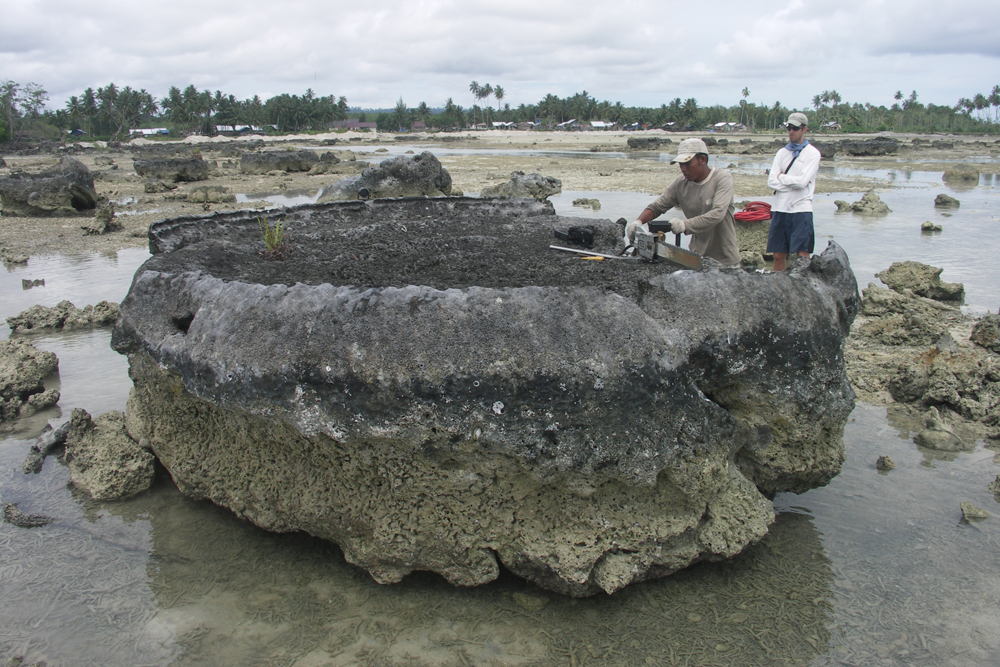
Killed-Off Corals Hold Clues to Earthquake Prediction

SAN FRANCISCO — Some of the biggest coral die-offs in recorded history happened in 2004 and 2005, after massive earthquakes in Sumatra, off the coast of Indonesia.
Now, researchers report similar evidence of ancient massive coral kills on Simeulue Island, caused by ancient earthquakes. An analysis of the fossil coral beds provides clues to the history of megaearthquakes in the region, and could help predict future quakes, researchers said Monday (Dec. 3) at the annual meeting of the American Geophysical Union.
Simeulue Island lies off the west coast of Sumatra, Indonesia, where the 2004 earthquake stopped and the 2005 shaker began to rip the fault apart. Earthquakes of this size may break a fault for hundreds of miles, but they do have a starting and stopping point.
The 2005 magnitude-8.7 earthquake lifted the southern end of Simeulue Island more than 5 feet (1.5 meters), killing the exposed parts of the large, circular coral "microatolls," which resemble cinnamon buns. [The 10 Biggest Earthquakes in History]
"Simeulue Saddle"
But the northern part of the island remained stationary during the 2005 earthquake, said Aron Meltzner, a research fellow at the Earth Observatory Institute of Singapore. The reverse holds true for 2004's megaquake, the giant magnitude-9.1 that hit on Dec. 26. That quake stopped just midway through Simeulue Island.
"The two halves of Simeulue have strikingly different histories. The two halves don't talk to each other," Meltzner said.
Sign up for the Live Science daily newsletter now
Get the world’s most fascinating discoveries delivered straight to your inbox.
Meltzner found a similar dichotomy stretching as far back as 1394 — none of the major uplifts in northern Simeulue extended into the south. And two big earthquakes in the south stopped midway through the island, before reaching the northern end.

Deadly subduction zone
Sumatra experiences frequent earthquakes because it is the meeting point of two of Earth's tectonic plates. Underneath Indonesia, one plate is sliding beneath another, forming what's called a subduction zone. The plates don't slide smoothly past one another. They get stuck, and energy builds up until they finally slip past one another, releasing the stored energy as an earthquake.
The coral remains not only record past earthquakes on the subduction zone, they reveal clues as to how energy builds up between earthquakes, a phenomenon called interseismic subsidence.
The coral growing along Sumatra's island coastlines tends to grow outward, not upward, when sea levels fall. The growth pattern recorded in their fossilized remains resembles tree rings, and reveals their age and clues to past trauma, such as sudden shifts in sea level from earthquake uplift.
At Nias Island, south of Simeulue, fossil coral shows the land bends down, or subsides, between earthquakes, storing up energy like a spring. The island pops up again after a large earthquake, such as the one in 2005, Meltzner said.
Predicting earthquake size
"For the 2005 patch of the fault, we know earthquakes smaller than 2005 may occur, but we're starting to believe that the largest earthquakes on the Nias–Southern Simeulue patch of the fault are similar to the earthquake in 2005," he told OurAmazingPlanet.
Finding a predictable rupture length, and figuring out how much ground was displaced, is a step toward predicting the size of future earthquakes, Meltzner said. "If we can show that a particular portion of a fault behaves consistently in terms of rupture extent and amount of displacement, then we can anticipate that future earthquakes will be similar to past earthquakes," he said.
But north of the Simeulue midpoint, where the deadly 2004 quake struck, the pattern is not at all consistent, he said. "I think there are some processes here that we don't understand, and the corals are beginning to hint at that," Meltzner said, something future study will have to elucidate.
This story was provided by OurAmazingPlanet, a sister site to LiveScience. Reach Becky Oskin at boskin@techmedianetwork.com. Follow her on Twitter @beckyoskin. Follow OurAmazingPlanet on Twitter@OAPlanet. We're also on Facebook and Google+.










